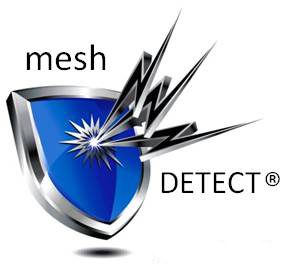 meshDETECT® is pleased to announce that it has recently received a notice of allowance for our second wireless blockchain patent from the United States Patent and Trademark Office (USPTO) for U.S. Patent Application Number 16/874,391 entitled “Systems and Methods For Blockchain Wireless Services In a Controlled Environment.
meshDETECT® is pleased to announce that it has recently received a notice of allowance for our second wireless blockchain patent from the United States Patent and Trademark Office (USPTO) for U.S. Patent Application Number 16/874,391 entitled “Systems and Methods For Blockchain Wireless Services In a Controlled Environment.
A notice of allowance from the United States Patent and Trademark Office is a written notification that a patent application has cleared internal review and is pending issuance.
This seventh patent expands our Secure Prison Cell Phone Solutions™ intellectual property portfolio and further expands our position as the prime innovator in the prison mobile device space by leveraging the security, efficiency and decentralization offered by blockchain technology.
The claims in this latest patent are directed toward managing commissary transactions using blockchain and smart contracts, for token management supported by a blockchain and for the enforcement of regulations in a controlled environment. This patent adds to the intellectual property foundation of Aisto®, our new blockchain powered inmate mobile device solution.
In general, there are quite a few benefits for the financial services industry to be achieved by using distributed ledger technologies (blockchain). This is also true for the financial systems used by detainees in correctional facilities to purchase services such as voice and video calls as well as goods offered in the commissary. Blockchain can address many of the problems currently experienced by inmates, their families and prison administrators using the current prison “banking systems.”
Banking systems used in prisons and correctional facilities have very little accountability. The lack of transparency excludes prison officials from seeing how inmates use their money outside the commissary. This lack of visibility also keeps all parties from becoming aware of discrepancies that may occur when funds are transferred, taken, or stolen.
Blockchain provides increased transparency among parties and as such improved reporting and monitoring by prison administration. Another key feature of blockchain is that any data recorded is immutable. Any data that is recorded on a blockchain can be tracked in real-time, leaving a very detailed audit trail. As such, it eliminates error handling and reconciliation, while providing the means to enforce rules and identifying and acting on policy violations.
The most commonly heard complaints about existing correctional prison financial networks are their lack of efficiency and lengthy delays when transferring funds into inmates’ accounts. Even when credit and debit cards are used to complete transactions, it can take hours or even days before the inmate has access to the funds. The account funding steps involved in using Green Dot cards are time consuming. Green Dot cards, for example, involve purchasing an actual card at a store. Money is placed on the card and then transferred into the inmate’s commissary account. Not only does each transaction (bank deposits / transfers and withdrawals) require a fee, there is also a fee every time the card is “reloaded.”
With Blockchain, settlements become user-optimised, which will save a significant amount of time and money, for both parties involved. Blockchain will remove the impact of processing friction and cost, as transactions settle instantly. The power of eliminating intermediaries is the ability to lower transaction costs and take back control from powerful financial intermediaries. Inmates and their families will benefit enormously as a result.
Combined with smart contracts, a self-executing contract containing the terms and conditions between the parties to the transactions, to regulate and execute inmate transactions extends the blockchain’s utility from simply record keeping to automatically implementing terms of multi-party agreements. An example would be the terms, rules, cost and scheduling of a video call between an inmate and his family.
With a shared database running a blockchain, the smart contracts are executed based on matching of terms and are validated by other parties instantaneously and without the need of an intermediary. This technology can enforce rules, regulations and ensure compliance while facilitating friction-less transactions.
Brian Byrne, Managing Partner of meshIP, LLC commented, “With this seventh patent, we continue to leverage the blockchain to create an integrated, end-to-end, blockchain powered services and financial system within correctional facilities. Combined with our first blockchain patent, this latest patent protects the intellectual property necessary to tie together the previously discreet domains of prison commissary providers, correctional banking systems, and the inmate communications services providers.”
Update (12/1/20): The patent (US10,855,838) was issued today by the United States Patent Office. You can view the patent here: Seventh meshDETECT patent
- Multi-Blockchain System for Inmate Forensics - April 2, 2024
- Blockchain to Secure Attorney-Inmate Privacy for Prison Calls - June 28, 2023
- meshDETECT® Announces Grant of Ninth Patent For Blockchain Wireless Services - August 26, 2022



